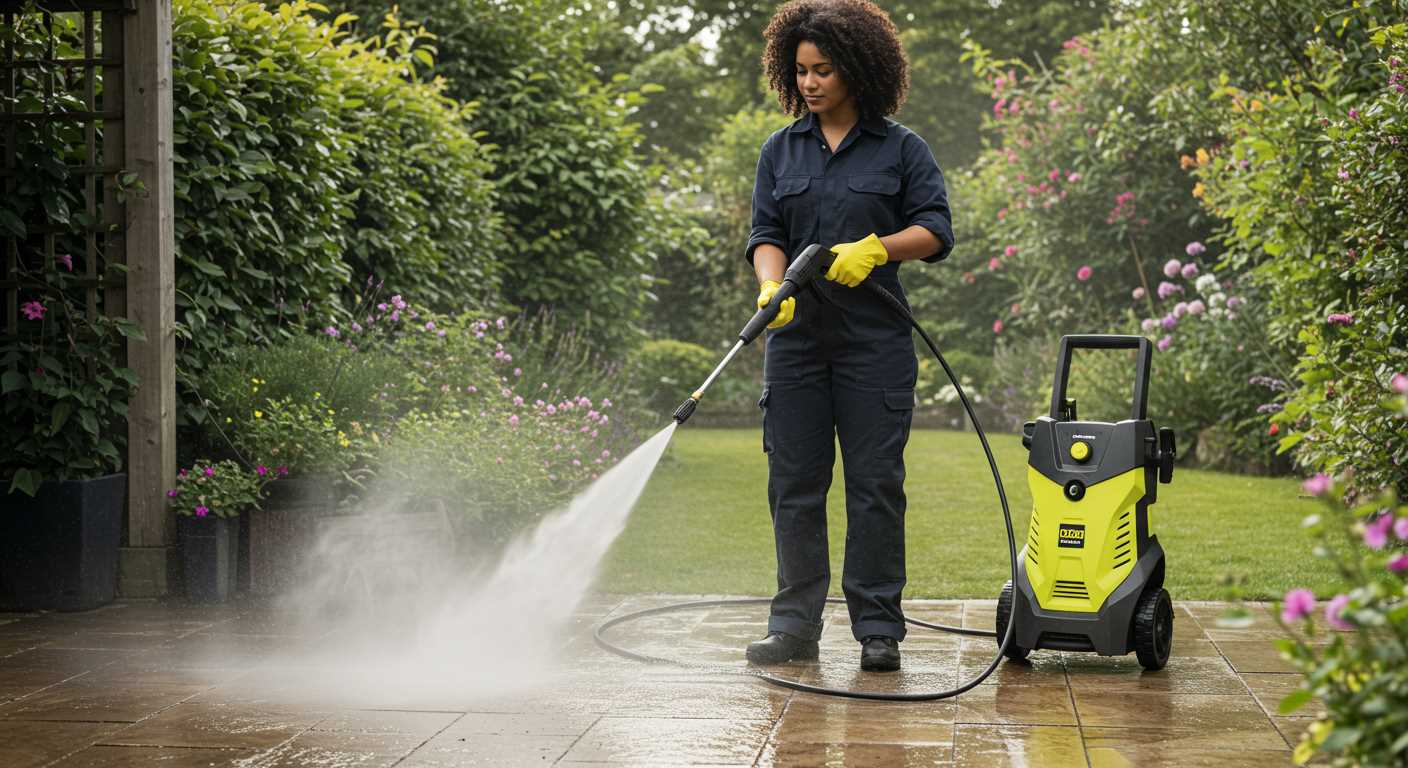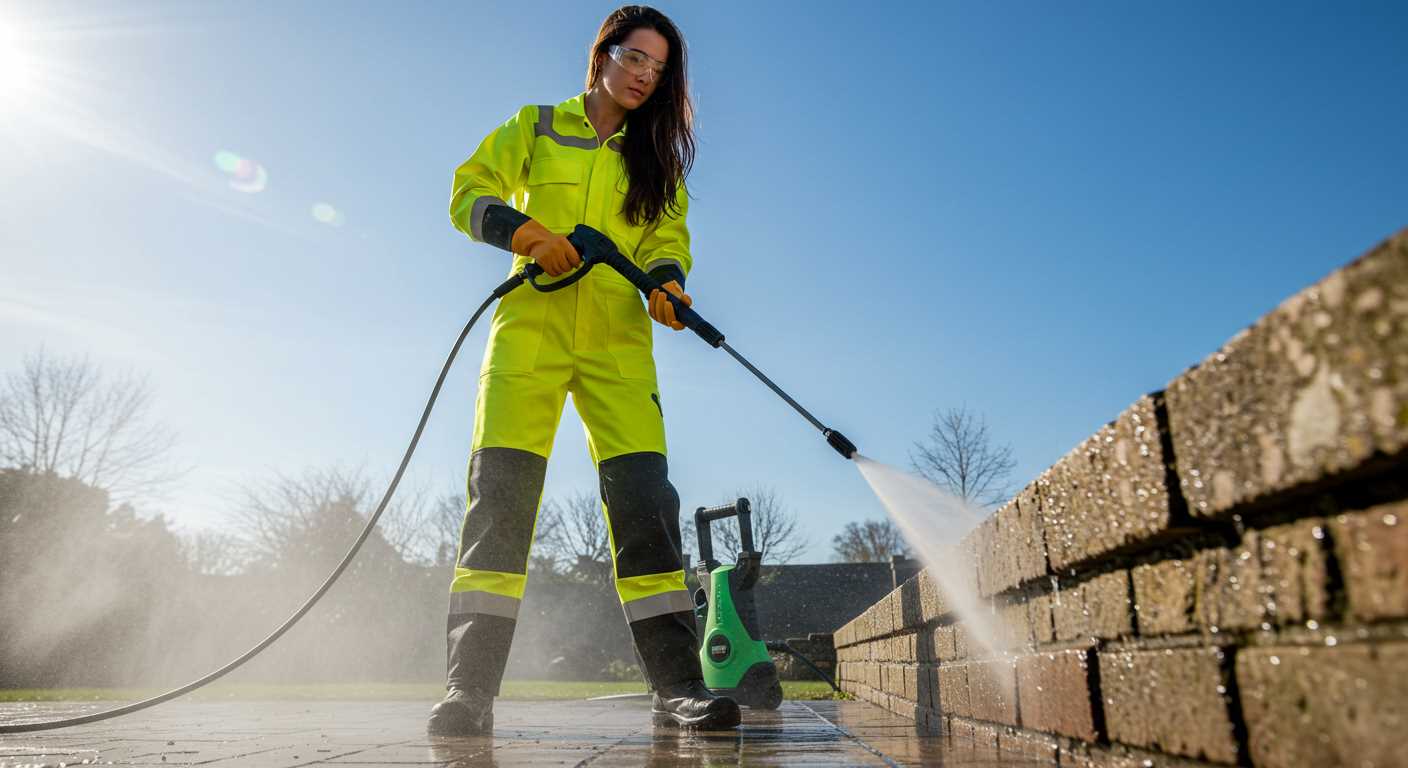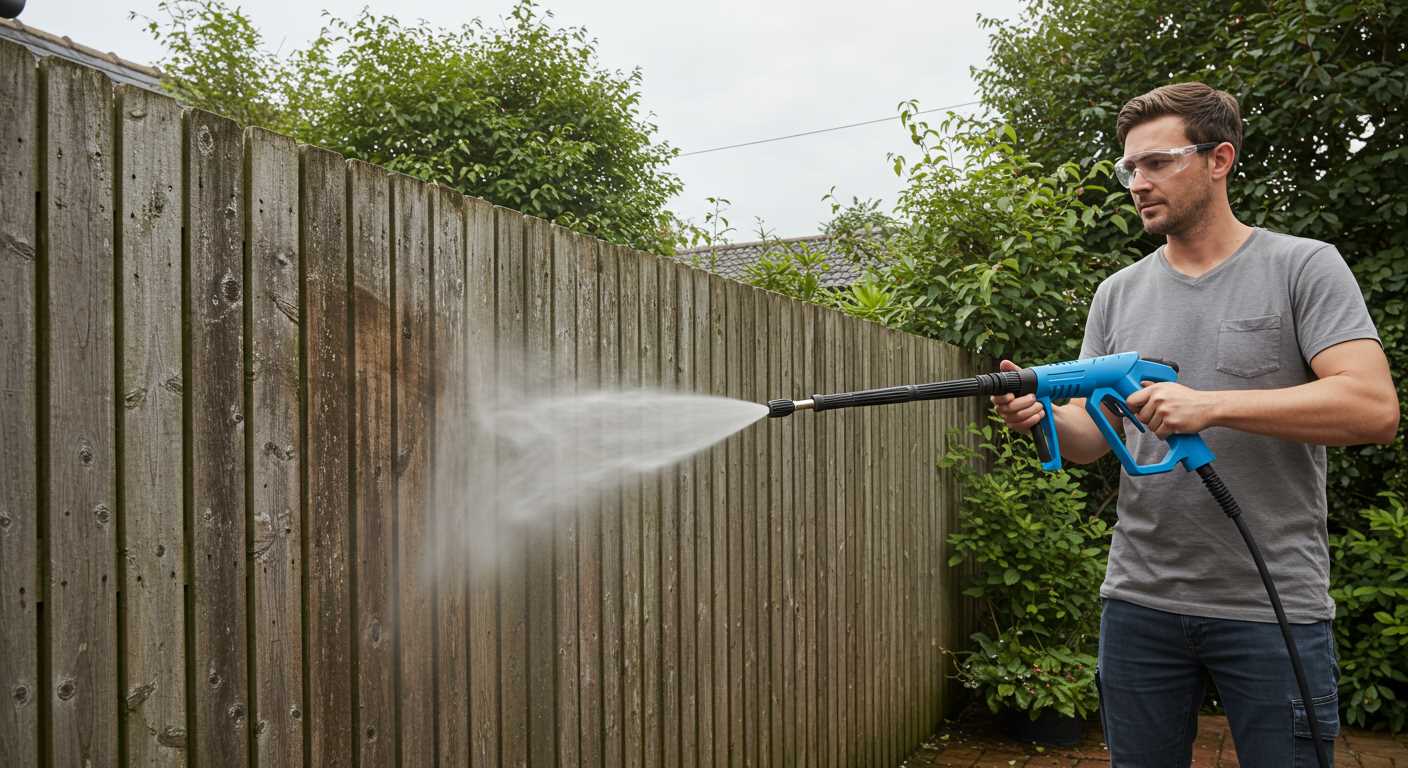If you seek reliable cleaning equipment, I recommend considering the Nilfisk E145.4-9 X-TRA. This model strikes an impressive balance between power and versatility, featuring a robust 2100W motor and a maximum pressure of 145 bar. It’s well-suited for various tasks, from washing cars to cleaning patios.
For those prioritising portability without sacrificing performance, the Nilfisk C135.1-8 PAD offers an excellent solution. Weighing just 5.2 kg, this compact unit is equipped with a 1300W motor that provides sufficient power for moderate cleaning jobs. Its lightweight design makes it easy to manoeuvre and store.
If high-performance is crucial, consider the Nilfisk P160.2-21. This heavy-duty variant boasts a powerful 2200W motor, delivering an impressive 160 bar of pressure, making it ideal for the toughest cleaning challenges, such as large driveways or industrial surfaces. The inclusion of a detergent system enhances its effectiveness for deep cleaning.
Evaluate your specific requirements against the characteristics of these models, ensuring you make a well-informed choice tailored to your cleaning activities.
Recommendation for A Model From This Brand
The E 145.4-9 X-TRA model stands out for its balance between power and versatility. With a 2100 W motor and an impressive maximum pressure of 145 bar, it’s designed to tackle a wide range of tasks, from cleaning patios to washing cars. The integration of Smart Control provides an intuitive interface, allowing for easy adjustments according to the cleaning task at hand.
Its highly efficient water usage of 500 litres per hour, combined with lightweight construction, makes it a practical choice for both occasional users and those with more demanding requirements. Additionally, the machine’s compact design facilitates effortless storage and transport.
Key Features to Consider
| Feature | Details |
|---|---|
| Power | 2100 W motor |
| Pressure | 145 bar |
| Water Flow | 500 litres/hour |
| Weight | 12.5 kg |
| Storage | Compact design |
This model also excels in accessory compatibility, with various nozzles available to suit different cleaning needs. Investing in the E 145.4-9 X-TRA means prioritising practicality without compromising performance.
Understanding Your Cleaning Needs
Before making a decision, assess the specific tasks you plan to tackle. Knowing the surfaces and types of grime involved will guide you to the right machine. For instance, if you’re frequently tackling heavy stains like oil or mud, opt for a unit with higher output pressure. Conversely, light cleaning of garden furniture only needs a model with lower specifications.
Surface Considerations
- Concrete and Brick: For these tougher surfaces, choose a more robust model with pressure around 120-180 bar.
- Wood: A gentle touch is required, so select something below 120 bar to avoid damage.
- Vehicles: A mid-range option between 110-140 bar is ideal to prevent scratches while effectively removing dirt.
Frequency and Duration of Use

- Frequent Usage: If you’ll be using it regularly, investing in a higher-end model will provide durability and efficiency.
- Occasional Tasks: For rare clean-ups, a more basic machine can suffice, offering ease of use without unnecessary features.
Lastly, consider the convenience features such as portability and storage. Models with compact designs and built-in storage for accessories can simplify your tasks significantly. Choose wisely based on real needs rather than just power ratings or features. A well-suited cleaner can vastly improve efficiency and satisfaction with your cleaning jobs.
Comparing Nilfisk Models

The E145.4 is ideal for frequent, medium-duty tasks. With a 140 bar pressure rating and a flow rate of 500 litres per hour, it’s versatile enough for patios and vehicles. Its compact design makes storage easier while still offering solid performance.
For those needing a more powerful alternative, the E145.4 X-TRA delivers enhanced power with its 150 bar pressure. It’s perfect for larger areas and heavy-duty cleaning jobs. This model features a high-performance motor and a built-in detergent tank, allowing for effective cleaning with soap applications.
On the other hand, the C125.3 is suitable for lighter duties around the home. With a pressure of 125 bar, it excels at cleaning bicycles and garden furniture. The integrated hose reel simplifies setup and storage, making it user-friendly.
For the environmentally conscious, the E140.3 offers energy savings with its eco-mode. This model optimises water and energy consumption while still maintaining 140 bar pressure. It’s particularly beneficial for those seeking to reduce bills without sacrificing cleaning power.
If portability is a priority, consider the P150.2. Weighing less and equipped with large wheels, it’s easy to manoeuvre. This model reaches 150 bar as well, making it a dependable choice for challenging tasks both at home and in remote areas.
In summary, each model has unique strengths. Evaluate your specific requirements–such as frequency of use, power needs, and cleaning tasks–before making a choice. The right version will enhance your efficiency and cleaning experience significantly.
Key Features to Look For

Prioritise power output. A model with a higher pressure rating, measured in bar, delivers superior cleaning results, especially for tough grime and larger outdoor areas. Aim for at least 130 bar for effective cleaning of patios and vehicles.
Evaluate water flow rate as well. Models with a higher litre per hour (l/h) rating help complete tasks quickly, meaning more time spent enjoying clean surfaces rather than cleaning them. Look for units that offer a flow rate of at least 400 l/h.
Portability and Design
Consider the weight and mobility features. A lightweight unit with ergonomic handles and sturdy wheels facilitates easy movement, particularly for larger gardens or driveways. Models with onboard storage for hoses and accessories streamline your cleaning experience and prevent clutter.
Versatility of Accessories
Check for included attachments and accessories. A range of nozzles, brushes, and extension wands can significantly enhance functionality and cater to various cleaning tasks. Adjustable spray patterns provide flexibility, allowing for careful cleaning of delicate surfaces as well as robust outdoor areas.
Assessing Power and Pressure Ratings
A model with a power rating of 1500 to 2000 watts typically delivers a strong performance suitable for most household tasks. For heavy-duty jobs, consider models exceeding 2000 watts, as they provide higher flow rates and greater pressure, often measured in bar or psi. A rating of 130 to 180 bar is effective for cleaning vehicles and patio areas, while anything above 200 bar is valuable for challenging surfaces like brickwork or stone.
Flow rate, expressed in litres per hour (l/h), complements the pressure metric. Look for units with a flow rate between 400 and 600 l/h for versatile use. Higher flow rates, generally found in models producing above 600 l/h, are crucial when tackling large areas or stubborn stains, as they reduce cleaning time significantly.
It’s important to align your equipment choice with your specific tasks. For light cleaning, a lower power rating suffices, while intense cleaning demands more robust features. Each series of products typically includes performance specifications, allowing for precise selection based on individual requirements.
For precise cleaning operations, adjustable pressure settings can be beneficial. They allow users to tailor performance for various surfaces, from delicate paintwork to tough concrete. Invest in models offering this flexibility for optimal results across diverse tasks.
Examining Accessories and Attachments
Investing in the right add-ons significantly enhances the versatility of your cleaning machine. I recommend considering a variety of attachments that match specific tasks to maximise your efficiency.
The rotary brush is a powerful tool for cleaning larger surface areas quickly. This accessory is ideal for driveways, patios, and a variety of outdoor surfaces, offering enhanced scrubbing capabilities. Look for models that feature adjustable speeds for different tasks.
A foam cannon is indispensable for those seeking to clean vehicles or delicate surfaces without risking damage. It creates a thick layer of foam that clings to surfaces, providing a thorough clean while reducing the need for harsh scrubbing.
Look for surface cleaner attachments that are specifically designed for flat surfaces. These tools can drastically reduce the time spent on cleaning large areas, delivering a uniform clean without the streaks often caused by traditional nozzles.
Always consider hose length as well; longer hoses offer greater reach and flexibility without needing to constantly move the machine, particularly important for extensive outdoor areas. A retractable hose reel attachment also helps with organisation and prevents tangling.
For those focusing on tight spaces, a set of nozzles ranging from narrow to wide spreads is critical. Each nozzle type serves different cleaning needs, from tackling stubborn grime to gentle misting.
Finally, protective gear such as nozzles that reduce splashback and safety goggles are advisable. Safety should never be overlooked, especially during extensive cleaning tasks.
Evaluating Durability and Build Quality
When selecting a cleaning device, durability and build quality must not be overlooked. A robust model not only withstands frequent use but also endures various environmental conditions. Focus on features that indicate strength and longevity.
Materials Matter
Identify models that utilise high-quality plastics and metals. For instance, reinforced plastic housings can resist corrosion and impact, while stainless steel components offer enhanced resilience against wear and tear. Look for devices with metal pumps, as they typically last longer than their plastic counterparts.
User Reviews
Consulting reviews can provide invaluable insights into a product’s longevity. Pay attention to feedback related to build quality and any mentioned issues that arise after prolonged use. Positive experiences often highlight a model’s robustness and reliability.
- Check for a warranty period: a longer warranty often indicates confidence in build quality.
- Look for certifications or ratings that specify testing under extreme conditions.
- Seek out testimonials focusing on long-term use.
Assessing these aspects will guide you towards a model that not only meets your immediate cleaning needs but also serves you well over time. By prioritising materials and user feedback, you can confidently choose a reliable and enduring appliance for your tasks.
Reading User Reviews and Testimonials
Check out reviews on sites like Amazon or dedicated forums. Look for patterns in feedback regarding specific models. For instance, users often praise certain machines for their ease of use and effectiveness on tough stains, while others might highlight issues with durability or performance under heavy loads.
Pay attention to comments addressing customer support experiences. A reliable warranty and responsive service can make a significant difference. Many users mention feeling reassured by good support after a purchase.
Consider the types of tasks reviewers mention. If you see consistent validation of a model’s performance for similar needs to yours, that’s a strong indicator. For example, if numerous users confirm excellent results on patios or vehicles, that should weigh heavily in your decision.
Don’t overlook observations about assembly and portability. Reviewers frequently share if a particular unit is cumbersome to move or difficult to store, which can affect your overall satisfaction.
Finally, check for recent testimonials. Older reviews might not reflect improvements made in newer versions. Recent feedback will give you a clearer picture of current performance and reliability.
Budget Considerations and Value for Money
When evaluating choices in this market, I recommend setting a clear budget to streamline the selection process. Determine what features you need and how much you are willing to spend. Basic models start around £100, offering sufficient cleaning power for light tasks, while more advanced options can exceed £400, providing enhanced performance for more demanding jobs.
I find that the mid-range units, typically priced between £200 and £300, strike a fantastic balance between cost and capability. They often include essential features such as adjustable pressure settings and various nozzles, making them versatile for different cleaning tasks. This range tends to offer greater reliability and often comes with extended warranties, which are crucial for ensuring long-term value.
Assessing Long-Term Investment
In my experience, investing in a more robust model can result in significant savings over time. While a cheaper alternative may seem appealing initially, it may lack durability, leading to repairs or replacements sooner than expected. Consider the materials used, as those with higher quality components will usually offer better longevity and performance.
Additionally, consider the availability of parts and accessories. A model that has widely available replacements may be more economical in the long run, allowing you to maintain performance without having to replace the entire unit. Research reviews on reliability and customer service, as these aspects can influence overall satisfaction and perceived value.






